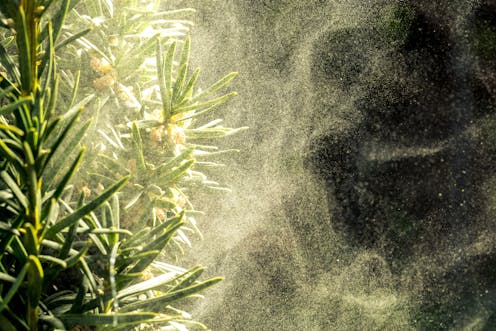
If you are allergic to pollen, you are likely to curse the existence of these microscopic particles. You’re not alone: up to 30% of the world’s population suffers from hay fever, which is often driven by pollen allergies. Shifting global climates are likely to push that figure even higher.
However, pollen represents one of the most powerful tools to uncover the nature of past environmental change.
I am the head of the Palaeoecology Laboratory at Nelson Mandela University in South Africa. My research focuses on unravelling the secrets of ancient environments and ecosystems by examining fossil pollen grains. These tiny time capsules hold a wealth of information about the earth’s past. They help scientists to reconstruct ecosystems, track climate change and understand the evolution of plant life.
But it can be difficult to source pollen deposits in arid regions. That’s because such deposits are often found in large lakes, which are in short supply in southern Africa. That’s where an unlikely scientific ally enters the picture: the fossilised urine of a small mammal, the rock hyrax (South Africans call them “dassies”).
Looking back
Pollen grains are incredibly durable because they are made of an organic substance (called sporopollenin) that is very resistant to decay. Pollen is released into the air, often in large quantities, and can settle on surfaces like lakes, and become preserved in sediment deposits over thousands, or even millions, of years.
In the lab, we examine the pollen found in these deposits using a microscope. By identifying the different types of pollen grains found within the different layers (representing different time slices) we can reconstruct the area’s vegetation history. Plants grow under specific climatic conditions: for instance, desert plants can grow under low rainfall conditions whereas forest plants need high amounts of rainfall. So we can make inferences about the climate at the time that the pollen was incorporated into the deposit.

As I’ve said, southern Africa’s arid climates mean there are very few large lakes in the region. This makes it a challenge to source deposits that adequately preserve pollen within them over long periods of time. That’s where fossilised dassie urine comes in.
These sticky deposits called “middens” accumulate in rock crevices in mountainous areas over thousands to tens of thousands of years and contain beautifully preserved pollen grains. As they also contain various other types of evidence (such as geochemical data) and can be accurately dated, they represent the most valuable archive of past climate data in southern Africa. The oldest middens we’ve worked with date back 50,000 years.
Ancient sites
The research my lab conducts, focusing on harnessing the power of the humble pollen grain and utilising unique archives such as hyrax middens, is strongly multidisciplinary. It draws together elements from botany, geography, geology, climatology and archaeology.
We are currently generating fossil pollen records from several sites within the Cape Fold Belt mountains of South Africa. For example, we have a midden sequence that covers the last 6,000 years from the Baviaanskloof in the Eastern Cape province. The fossil pollen from this sequence shows that there was a dramatic shift in vegetation about 3,300 years ago, driven by a large fire event and increased temperatures. We’re hoping to publish this research soon.
This information provides baselines of variability in natural systems and can help inform current conservation efforts within the Baviaanskloof, which is a biodiversity hotspot.
Another project that we are involved in is centred on the archaeological excavation within South Africa’s southern Cape region at a site called Boomplaas Cave. By using the fossil pollen within hyrax middens found within the vicinity of Boomplaas Cave, we hope to provide the environmental context to the archaeological record which can help to decipher how early humans responded to climate change.
And looking forward
We are not only working within the realm of the past: as pollen is one of the main sources of allergies it is important to monitor the types and amounts of pollen currently present in the air we breathe. My lab is part of the South African Pollen Monitoring network and we generate pollen data for the city of Gqeberha in the Eastern Cape province.
This initiative focuses on analysing pollen captured in the air across several different parts of South Africa and ensuring that this information is publicly available. This project is particularly important as, due to climate change, pollen seasons are lengthening and allergenic pollen is increasing.
Lynne Quick receives funding from the National Research Foundation of South Africa: African Origins Platform and GENUS: DSI-NRF Centre of Excellence in Palaeosciences
This article was originally published on The Conversation. Read the original article.







